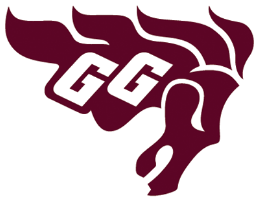
-
- Year:
- 1980-2019
-
- Category:
- Builder
-
- Inducted:
- 2014
Bio
For 40 seasons, Dr. Greenberg has put the health and well-being of Gee-Gees athletes at the forefront. Dr. Greenberg was the varsity team physician for both the Gee-Gees football and men’s hockey programs, starting his affiliation with the program in 1980.
Dr. Greenberg attended Fisher Park High School in Ottawa, Ontario where he captained three city football championship teams. Upon graduation, he obtained his Bachelor of Science degree from Carleton University in 1973, and four years later graduated with a Medical Doctorate degree from the University of Ottawa. Gary interned at the Mount Sinai Hospital in Toronto, Ontario in 1977-78 and was an orthopedic resident at uOttawa in 1979-80.
In 1980, he founded the uOttawa Sports Medicine & Physiotherapy Clinic the same year he became staff physician at the Emergency department of the Ottawa Hospital. He became a Fellow of the Royal College of Physicians and Surgeons in 1986, and is the co-author of the Ottawa Ankle and Foot x-ray rules. He was also the team physician for the CFL's Ottawa Rough Riders (1989-1996), Ottawa Renegades (2002-2005), and Ottawa Redblacks as well as the Ottawa Lynx baseball team (1996-2003).
Interview with Dr. Greenberg in 2019 ahead of his 40th season as team doctor:
“I’ve always been interested in sports. One of the other orthopedic doctors had been assigned to take over the role from Dr. Waddell and was finding that he didn’t have the time. At that time I was just starting out my career in emergency medicine, even though I had some training in orthopedics, and I agreed to take over the role from him. It was an opportunity for me to use my skills that I had in emergency which were actually very fitting for covering contact sports at the university level in terms of managing injuries of all sorts. I started the Sports Medicine Clinic at the same time, and felt a connection with the university teams. I still see a lot of the players from back in the day and it’s always good to see how they’ve been going on through their life – their careers and their families, etc.”
“The orthopedic doctor at health services at that time wanted to back away – he had been running a clinic once in a while and I felt it was something important for the university varsity teams to have something available. Plus, there was no actual availability for someone with Sports Medicine knowledge in the Centretown community so we started it out. I used to sometimes do a two hour clinic after I finished a night shift at the hospital in emergency and would try to have it go that way. Eventually within about a year or two we started adding more physicians and it grew at that time. I continued my relationship with the hockey and football teams throughout the forty years. In the 1980 season I covered both football and hockey.”
“Some things have changed a lot – the modalities of how we deal with certain things, the surgeries have become less complex. Early on, somebody would have a meniscus tear and they would have an open menisectemy and it was a long time before they could return. Now with the scopes a lot of things are done differently, the imaging and MRIs are much more commonly used now.”
“Some things don’t change. The assessments, the history and physical are still the mainstay of trying to figure out what’s going on with the patients and what kind of injury they may have. In terms of the actual athletes – clearly their training methods are better than what they used to be. They’ve got nutritionists, strengthening coaches – all those kind of things were not in vogue at the start. Things nowadays are much more technical – we use ultrasounds now, sometimes in SITE, for injections and things like that. Those are things that weren’t really available in the eighties, we just did it on a clinical basis.”
“We had Lorraine Hendry who had joined us as a physiotherapist, we had an athletic therapist who looked after the team – Gunner. We started out with a small room at 43 Templeton when it was a three-story small building. Finally the building at 100 Marie Curie was built and we moved in there. Then we moved in here when the Sports Complex was built.”
“I still enjoy it – it’s a way of giving back to the university as a medical graduate from uOttawa. It’s a way of centralizing the care for the athletes, which gives better continuity of care.”
“I’m proud of the fact that I started the Sports Medicine Clinic and it’s still ongoing, and I’m proud of the fact that I’ve been able to go for forty years and provide care. Sometimes players will tell me that they feel that they couldn’t have got through university without my help; in some cases no help was needed at all they got through without any problems. In any event it feels like being part of a team. It’s a close feeling because the players here, when they graduate and I see them later on they have been appreciative of the care and recognize the expediting of their management that I’ve been able to give to them. If I do see people in a casual way socially, it’s also something that they cherish and I cherish too.”
